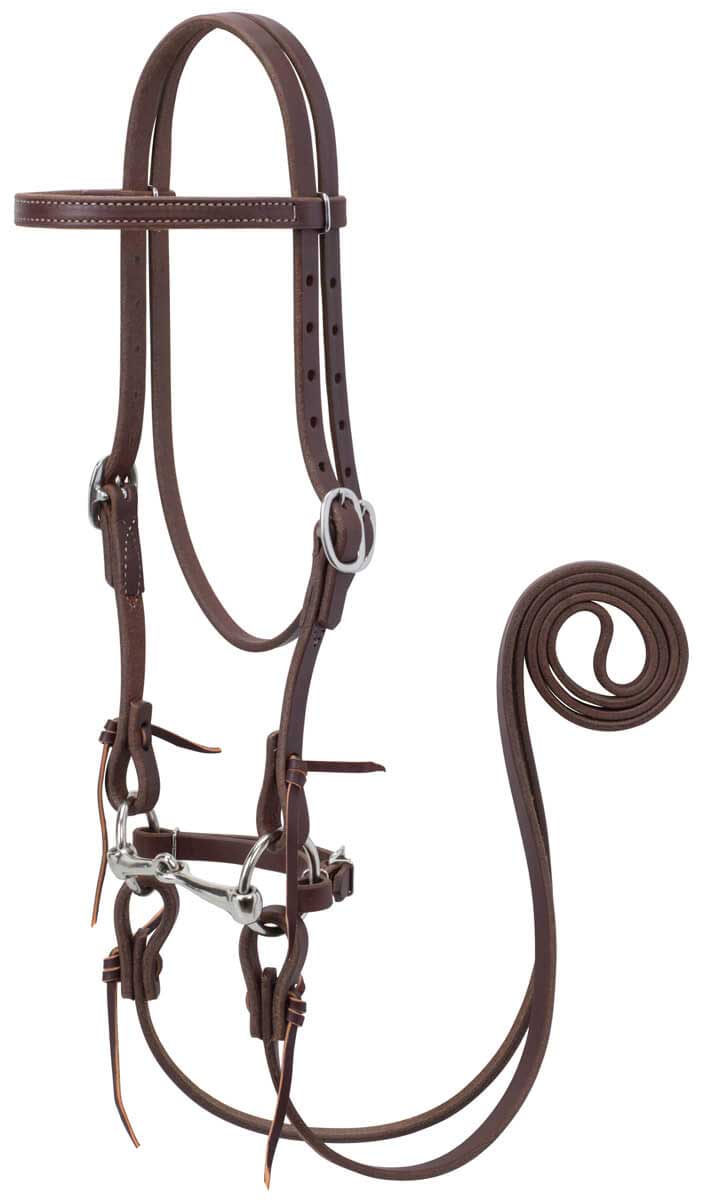So this was circulating around Facebook so it deserves some added information.
First of all the horse on the left, yes, too tight is bad
Middle horse is correct
HOWEVER the horse on the right is in a snaffle bit with no strap or noseband and that is not correct.


lets start with what a snaffle bit is so you know what you are looking for.
The snaffle is a non leverage bit. The sides can be a loose O shaped ring, commonly called a loose ring. It can be a fixed O shaped ring called an eggbut. It can also be a fixed D shaped ring called a D ring.
If you notice I said nothing about the mouth piece, the center, just the sides of the bit.
When these sides are attached to reins the rein is free to move around the ring there is no pivot point. So there is no leverage.
A curb bit is a bit with leverage. There is an anchor point for the cheek piece (side) of the bridle, and a fixed location for the reins (can be more than one spot for the reins). The leverage will pull on the pole of the horse, as well as tighten the curb strap under their chin. You say... but you just said put a strap on my snaffle. Well if you pull back on a snaffle you will not be able to make the snaffle strap touch the horse. If you pull the reins back with a leverage bit the curb strap will tighten into the lower jaw of the horse. As you look through them you'll think but the mouth pieces are broken like a snaffle. But the distinguishing factors between a snaffle and a curb is only the leverage. So a gag bit is leverage.


The only leverage bit, with a distinct rein and cheek piece secure point that would ever be classified as a snaffle bit in SOME show rings is the Baucher bit. That is only because it's designed to remove pressure from the mouth with rein contact. As you pull the reins the bars release pressure in the mouth transferring it to the pole. So this bit is still a snaffle bit in most cases
 |
| Western bridle showing snaffle strap |

What this means to the rider is that if they fall off (or are jerks and pull hard, or even a one rein stop) you can pull these rings through the horses mouth and the cheek piece (side) of the bridle will just keep going through the horses mouth. So to protect the horse when you fall (or from jerks) you can add a strap under the bit (western riders do this) or a noseband (english riders do this)
Notice on the English i show a standard and a flash. The flash attaches around the nose below the bit. The actual true reason this was designed was for people with horrible hands and horses with sensitive mouths that have to work together. That trap stabilizes the bit position and the horses lips so that there is less movement of the bit when the horrible hands are slopping around. .... makes you wonder why they are used in dressage especially if the riders are trained from training level up to have steady hands with soft but constant connection....hmm.... Both straps should always have 2 fingers gap for horse comfort and to be fit properly.
Now there are A TON of English nosebands and new designs and all kinds of new research going on. So here are some other English nosebands just to look at in case you see them you know they serve the same general purpose of saving the horse from the snaffle bit going through their mouth.
Some have research about the nerves of the horses face and readjusting location of contact to help sensitive nerve paths. But if your noseband is truly fitted with 2 fingers spacing there will be no nerve damage to the horse.
Yes horses have personal preferences. Just like humans. I personally HATE wearing skirts, but I know many that love them and can't be comfortable with anything else. So that is something you can play with on your own horse.
But the summary of the whole blog is ... keep your horse safe use a snaffle "curb" strap or noseband that is fitted correctly.




